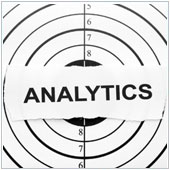 There are many important components of a business, and data is definitely among the most popular. Pause and think for a moment how much of your business relies on it. It would be a challenge for a business to function without it. For business owners that look into data, many will have heard the term ‘business analytics’ before. However, this term can be a bit ambiguous and confusing.
There are many important components of a business, and data is definitely among the most popular. Pause and think for a moment how much of your business relies on it. It would be a challenge for a business to function without it. For business owners that look into data, many will have heard the term ‘business analytics’ before. However, this term can be a bit ambiguous and confusing.
In this article we will take a brief look at business analytics and why it is so important to businesses of all sizes.
Business analytics defined
When experts talk about analytics most audiences will agree that it is the analysis of data and statistics. The vast majority of business owners have some experience with analytics, with some having even taken courses on it at University. This being said, the idea of business analytics is often hard to pin down – ask 10 people and you will likely get 10 different answers defining what exactly it is.
We like to define business analytics as a process rather than a science. This process uses skills, business experience, technology, applications, and common business practices, to enable business owners, managers, and employees to explore past performance. Simply put, it’s the study of the past performance of a business.
With most businesses, the goal of business analytics is to gain insights into the state of the company, and even drive future decisions based on existing data. If you can successfully implement a business analytics process, you and your employees will gain a higher understanding of your business which will lead to better decision making abilities and even higher growth and profits.
What makes up business analytics
As we noted above, this is a process that involves a number of separate components. Four to be exact:
- Analytics – Using modern data mining and predictive tools to identify patterns that can help make better business decisions and give managers foresight into potential future trends. Usually the questions answered include, “What is the best outcome?”, “Why did this work?”, etc.
- Data management – This covers the collection and storage of data. Concepts include how and where the data is stored, who has access to it, how it is accessed, and even when it can be accessed. Some examples of this include using cloud-based storage or even a storage server that is hosted in the office. When looking at data management in terms of analytics, most managers will concentrate on what has worked in the past, why it worked, and what will work in the future.
- Business Intelligence – This is the use of reporting tools and dashboards to gain an understanding of largely event-based questions like, “How many?”, etc. When you implement business intelligence operations you will normally gain better insights into current events and what happened in the past to influence them.
- Performance Management – This broad term covers actions and tools that are used to track and manage business performance. This includes tasks such a financial reporting and budget forecasting.
The main reason businesses implement the components of business analytics is so that they have a way to not only harness the data their business generates, but to also leverage it in a constructive way so that their business can make better decisions. If used properly, it really helps businesses answer two of the hardest questions to answer: “What do I need to know?” and “What do I need to do?”
If you are looking to learn more about using business analytics or the components that make up this process, contact us today to see how our solutions can help.